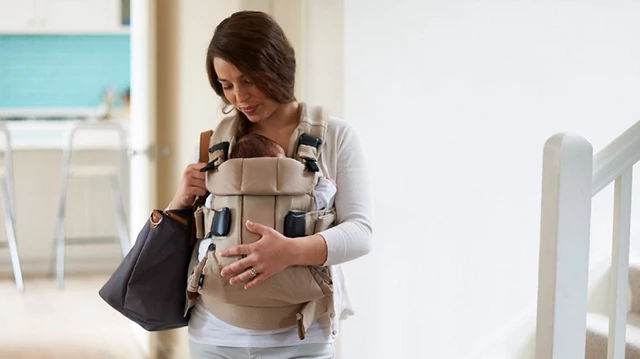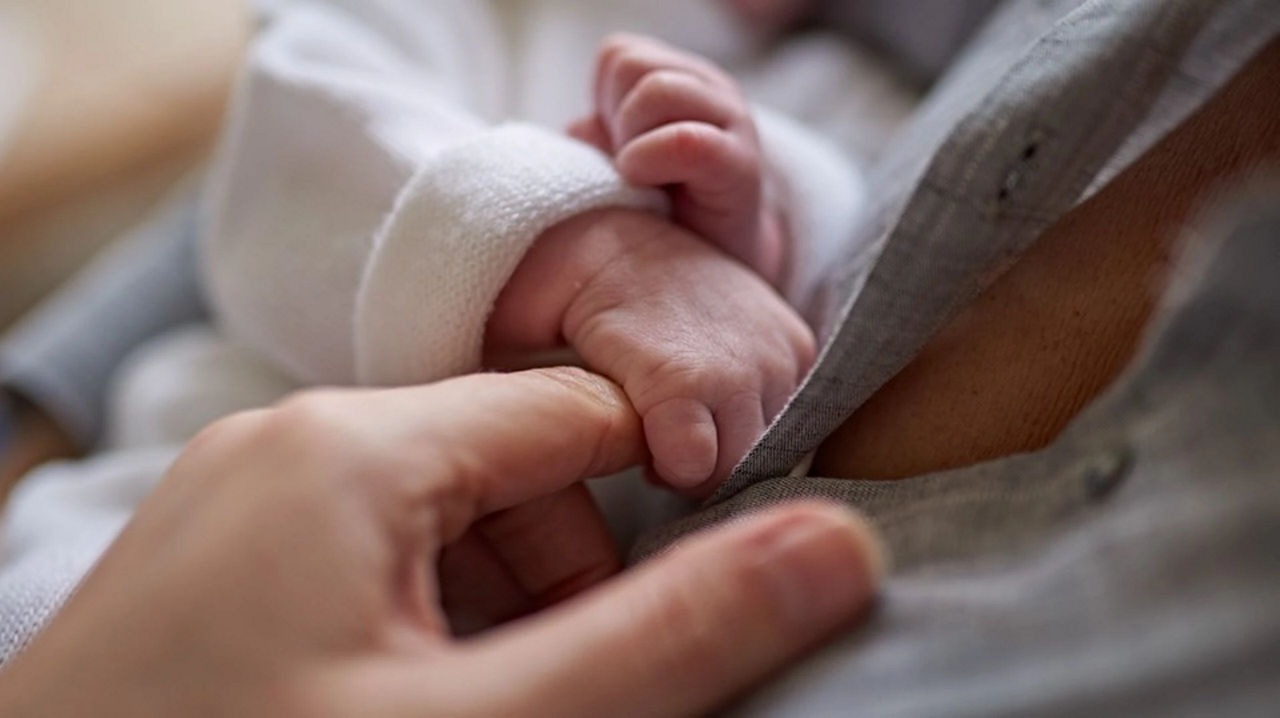Your midwife will talk you and your partner through the very first nappy change, but after that it’s a case of learn-as-you-go. Luckily, with a bit of preparation, combined with the constant practice (up to 12 times a day), you’ll soon be an expert.
How to change a baby’s nappy
The complete guide to baby nappies
Your first nappy change can be a little daunting. You’ll need to negotiate kicking legs and the tar-like consistency of meconium. Then there’s avoiding their umbilical cord clamp and the fact that they’ll almost certainly wee as soon as their nappy comes off – particularly if you have a boy. Our guide will help you to master this essential skill.
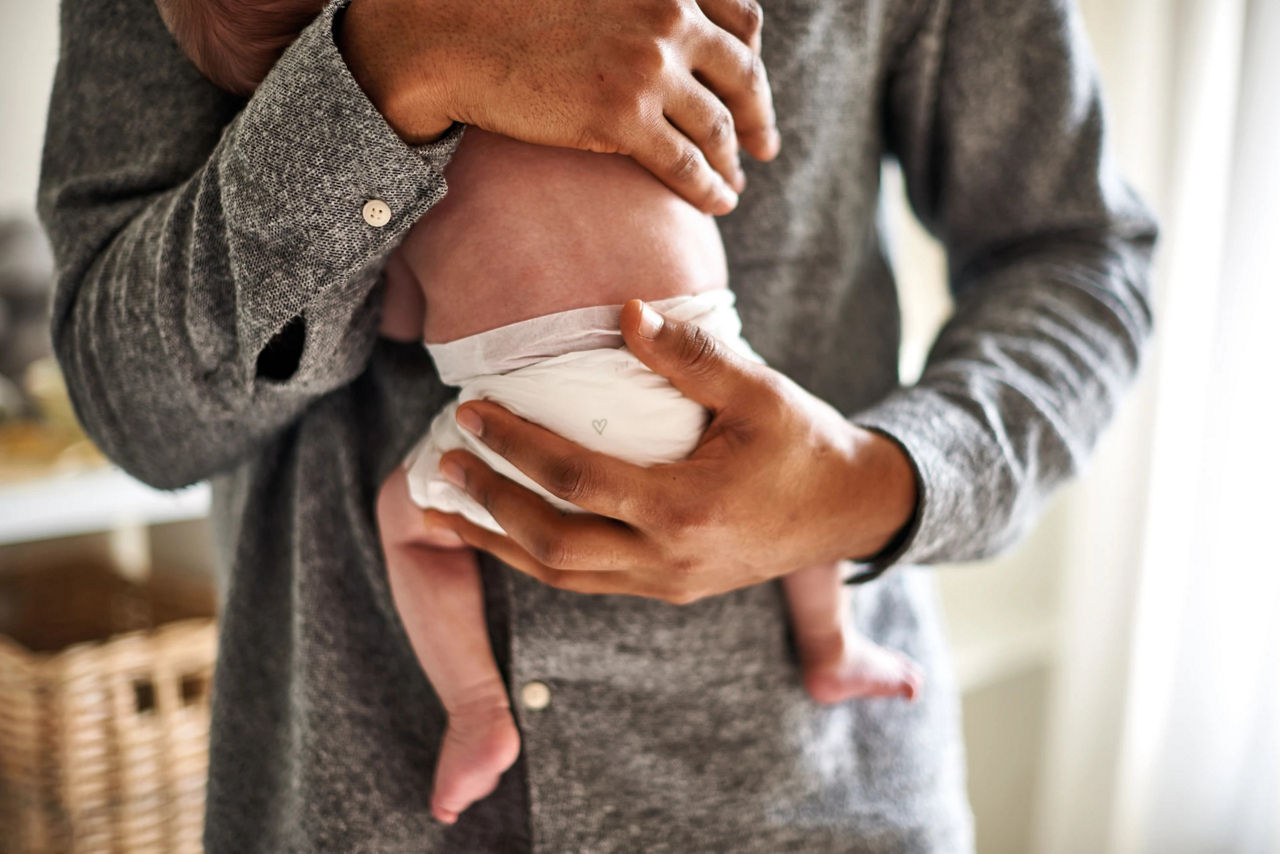
Time for a change?
Changing a disposable nappy
- Wash your hands with warm, soapy water.
- Place your baby on a soft, safe, waterproof surface and remove their clothing.
- Open the dirty nappy. Holding their legs, clean the area with wet cotton wool or wipes. Dry thoroughly.
- Slide the dirty nappy away from your baby, and quickly replace it with a clean nappy.
- Pull up the front of the clean nappy and fasten the sticky tabs.
- To avoid the umbilical cord, fasten tabs lower and fold nappy, front down.
- Roll up the dirty nappy and use sticky tabs to refasten into a neat bundle.
- Dress your baby.
- Place the nappy in a disposable bag in the bin and wash your hands.
Changing stations
When it comes to changing nappies, preparation pays off. A well-stocked changing station makes a world of difference. Making sure you have everything to hand before you start will stop it getting too messy.
Where should I change a nappy?
Once you’re home you can set up a changing station anywhere in your house. A changing table is handy in the early days as it means you don’t spend as much time hunched over, but it’s not essential. If you have a changing mat, you can change a baby’s nappy on the floor in any room, and this is actually safer once your baby becomes more mobile. Quick access to a sink is also useful. It’s all about what’s easiest for you.
Disposable nappy changing essentials
- Changing mat.
- Soap to wash your hands.
- Clean nappies.
- Cotton wool balls.
- Pot of cooled boiled water.
- Clean change of clothes (and a spare set just in case!).
You can use baby wipes if you prefer, but cotton wool and water are fine at first and won’t irritate your newborn’s delicate skin. Nappy bags are also useful for disposing of nappies hygienically. As your baby gets older, you may need to use a barrier cream to prevent soreness and nappy rash, but it shouldn’t be necessary at first.
Out and about
You’ll need another set of nappy changing essentials in a bag to carry with you whenever you leave the house. Consider investing in a lightweight, portable changing mat. They can be a lifesaver when you’re on the go. Remember that you can never pack too many spare clothes.
Why is my newborn’s stool changing colour?
Your baby’s stools will change colour quite dramatically in their first week and won’t resemble adult stools until they start to wean from 6 months onwards.
What is meconium?
Your baby’s first stool is known as meconium. It’s made up of the waste products like mucus, bile, cells, amniotic fluid and lanugo. It also keeps their intestine ‘inflated’ so that it’s ready for action after birth. It’s greenish-black, sticky, tar-like and hard to clean off skin, but while it looks unpleasant, it doesn’t smell as there are no bacteria present. The passing of meconium is an important milestone as it shows your baby’s bowels are working properly1.
What changes should concern me?
Babies’ stomachs are delicate, and their stool colour, consistency and smell can change quite frequently, making ‘normal’ hard to define. The warning signs to look out for are diarrhoea, constipation or blood-streaked stool. If it’s a one-off, then it could be due to a change in your baby’s diet. Switching to formula, for example, can cause thicker stools that are associated with constipation. Dehydration can also cause constipation, which in turn can cause your baby to strain, leading to bleeding. If you notice frequent or continuous diarrhoea, constipation or blood-streaked stool, ask your doctor, health visitor or midwife for advice.
A breastfed baby's stool colours
How often should you change a newborn’s nappy?
In the first day or two, you will only get through a few nappies, but by the end of the week this number is likely to go up to 6 to 12 nappies. Most will be just wet2, although breastfed babies poo more regularly than bottle-fed babies. Your baby may cry if they are feeling uncomfortable in a dirty nappy, and some disposable nappies have built-in moisture indicators to tell you when it’s time for a change.
Reusable nappies vs disposable nappies
Although this may seem like a tricky dilemma, it’s a matter of weighing up the pros and cons and going for the best option for you and your family. Disposable nappies are quick, easy, convenient, very absorbent and cheaper to buy initially. Reusable cloth nappies require an upfront investment but are often cheaper in the long run and contain fewer chemicals. They do, however, require regular washing and drying. While reusable nappies definitely reduce the amount of waste going into landfill, a recent report revealed that constant washing and drying may cause more carbon emissions than disposables3. More environmentally-friendly disposables offer another option but will still add to landfill if not composted correctly.
If you’re keen to be green, then do your research, avoid boil-washing or tumble-drying your cloth nappies and aim to use them for more than one child.
Should I wake my baby to change their nappy at night?
Leaving your baby in a dirty nappy for too long can cause nappy rash, so you should make sure to change them as soon as possible4. If you need to change them during the night and they are asleep, you can try to change their nappy without waking them. Try not to turn the lights on, or keep them dimmed, and be extra gentle while you change them so as not to wake them up.
Next steps
- You will need to take nappy changing essentials with you to the hospital. Read our hospital bag checklist for more information on what you’ll need to take here.
- Stock your changing table with plenty of supplies – nappies and wipes are often cheaper if you buy them in large quantities.
- Prepare a nappy changing basket or box downstairs too, complete with a changing mat, nappies, cotton wool and a spare baby grow for any inevitable accidents.
- Get to know your nappies. Practise on a teddy or ask a other parents friends to show you how they do it.
related articles
Learn more about your baby
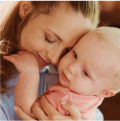
Need some help?
You can get quick answers to common questions in our FAQs.
Alternatively, if you need help with general pregnancy or baby advice, or maybe on using or ordering our products - our expert team are always on hand to talk about feeding your baby.
About the article
- NCT. Newborn baby poo in nappies: what to expect [Online]. 2015. Available at: http://www.nct.org.uk/parenting/whats-your-babys-nappy [Accessed March 2017]
- Shevlov SP, Altmann TR. Caring for Your Baby and Young Child: Birth to Age 5-6th ed. American Academy of Pediatrics: New York, 2014.
- Environment Agency. An updated lifecycle assessment for disposable and reusable nappies [Online]. 2008. Available at: https://www.gov.uk/government/publications/an-updated-lifecycle-assessment-for-disposable-and-reusable-nappies[Accessed March 2017]
- NHS. Nappy rash [Online] 2018. Available at: https://www.nhs.uk/conditions/pregnancy-and-baby/nappy-rash/ [Accessed June 2020]
Last reviewed: 06th July 2020
Reviewed by Nutricia’s Medical and Scientific Affairs Team


